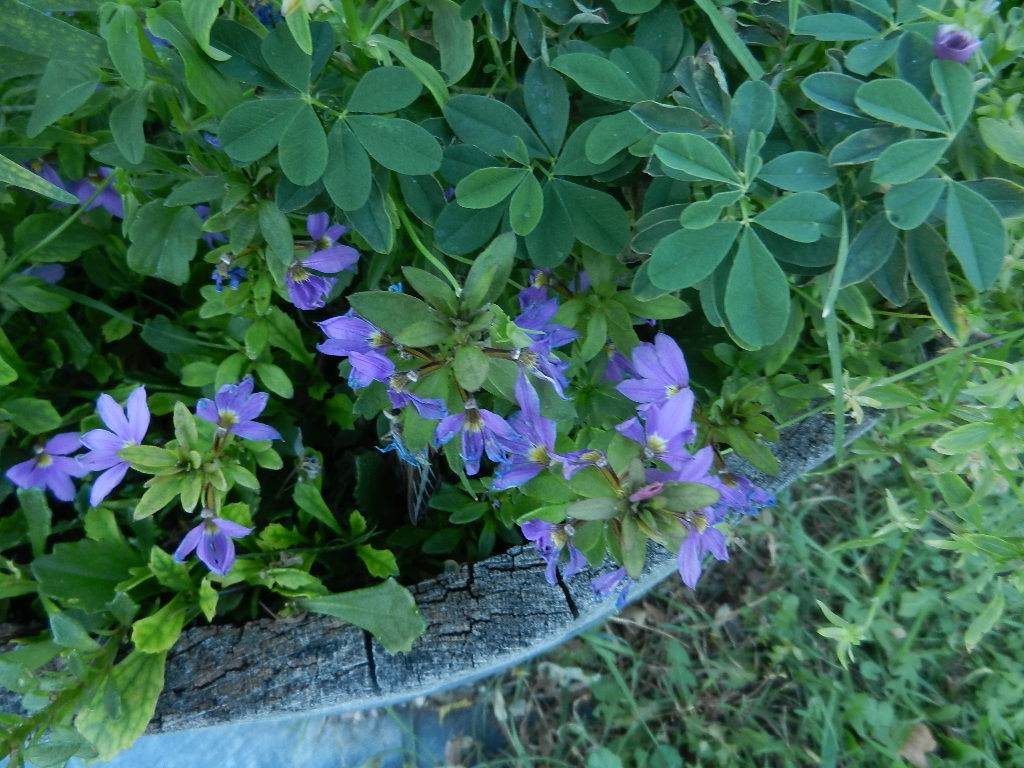Perennial Favorites is located in a little hollow, a low spot at the base of a south-facing ridge. That means that when it’s cold in Rye or Colorado City, it’s often colder here! Thursday night it was 36 F. in Rye, but our thermometer read 31 F.
I walked around the gardens and noticed the plants that suffered from that temperature. Not everything did, and some of the plants that did might surprise you. Some perennials, like Russian Sage for example, are damaged by any temperature below freezing. They’ll come back next year, no worries, but they’re done in my garden for this season. Lion’s Ear, Leonotis leonurus, is an annual in our climate, and you wouldn’t expect it to survive frost. I love it, the hummingbirds love it, but it’s not a bit hardy. Here’s a bud that is drooping after the frost.
This Lion’s Ear seeded into the garden here. I didn’t expect it to do that, and when I noticed it, I wondered if it would be able to bloom before frost. Sadly, no, it needs too long of a growing season. This is one that needs to be started in the greenhouse in March and planted into the garden after danger of frost has passed.
Not all perennials are damaged by freezing temperatures. This agastache wasn’t fazed. There were some birders here from Denver last week and when they saw this one blooming, said, “That’s the biggest hyssop I’ve ever seen.” It seeded itself in the hummingbird garden and is very vigorous. I think it’s the result of a cross of Agastache rupestris with Agastache ‘Rye Pink.’ Before this one appeared there was an Agastache rupestris nearby and a Rye Pink not far away.
I took that picture this morning–no damage from frost to this plant.
There were some annuals that survived the frost, too. It seems funny that some perennials, like the Russian Sage and Winter Savory (Satureja montana) turned dark and wilted, while annuals like Fan Flower (Scaevola aemula) were untouched.
I made a quick list of plants still blooming after the first frost: Potentilla fruticosa, Sedum sieboldii, Sedum ‘Autumn Joy,’ Snapdragons, Viola cornuta, Agastache, Achillea ‘Moonshine,’ Penstemon rostiflorus, Penstemon ‘Rondo,’ Lamium maculatum, hollyhocks, Chysanthemum weyrichii, Chrysanthemum ‘Mary Stoker,’ Phlox paniculata, Anthemis marshalliana, Nepeta ‘Walker’s Low, Nepeta mussini, Aster ‘Eventide,’ Aster porteri, Aster ‘October Skies,’ and Veronica pectinata. The leaves of trees and shrubs and vines are beginning to change color, too, with our native currant the first to show deep shades of red. Oaks and ash trees and sumac will be in color in another week or so, and if it doesn’t get too cold, too soon, Virginia creeper will add to the display. What a fine time of year!
Here’s the Sedum sieboldii, a plant I like to add to troughs and all sorts of pots. It’s one of the last of the sedums to bloom and sometimes goes by the made-up common name of October Daphne.
This first frost is the earliest frost we’ve had in years. We’ve been lulled into thinking that we can leave houseplants outside until the middle of October and still be picking tomatoes at Halloween. Not true this year! It’s time to bring anything tender inside, or say goodbye to it.




